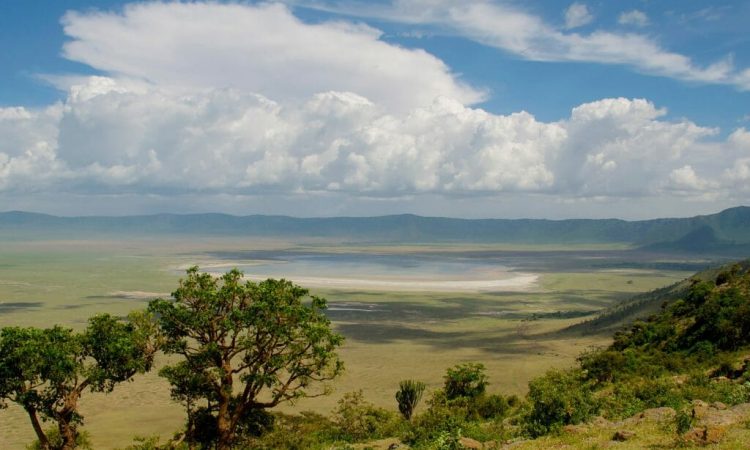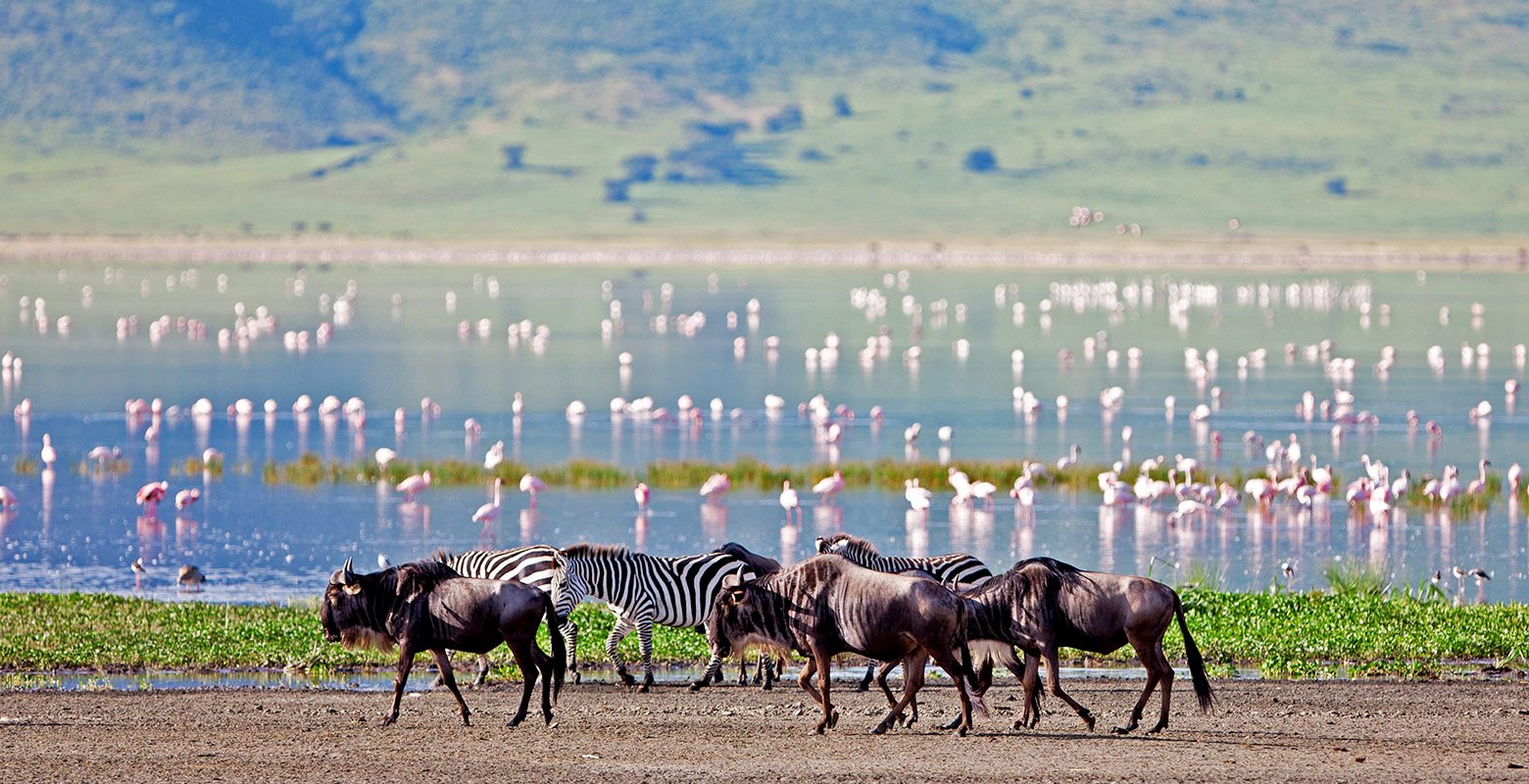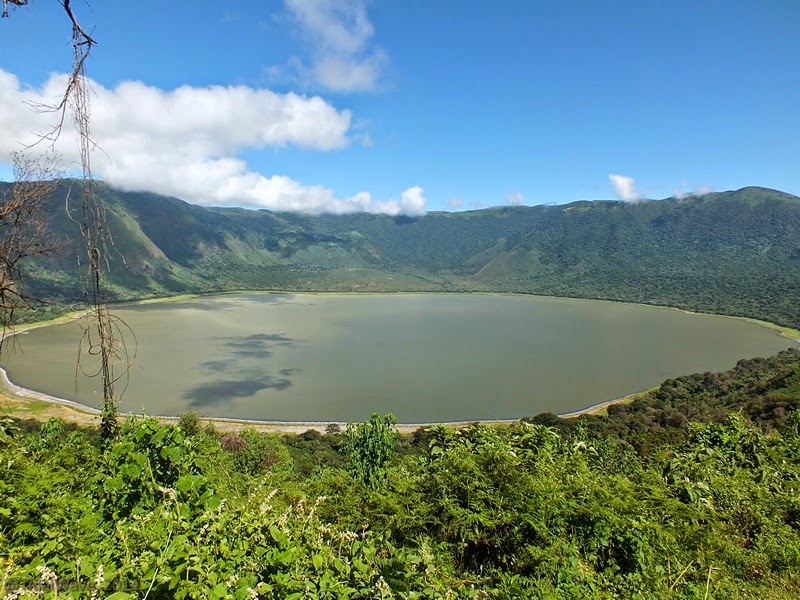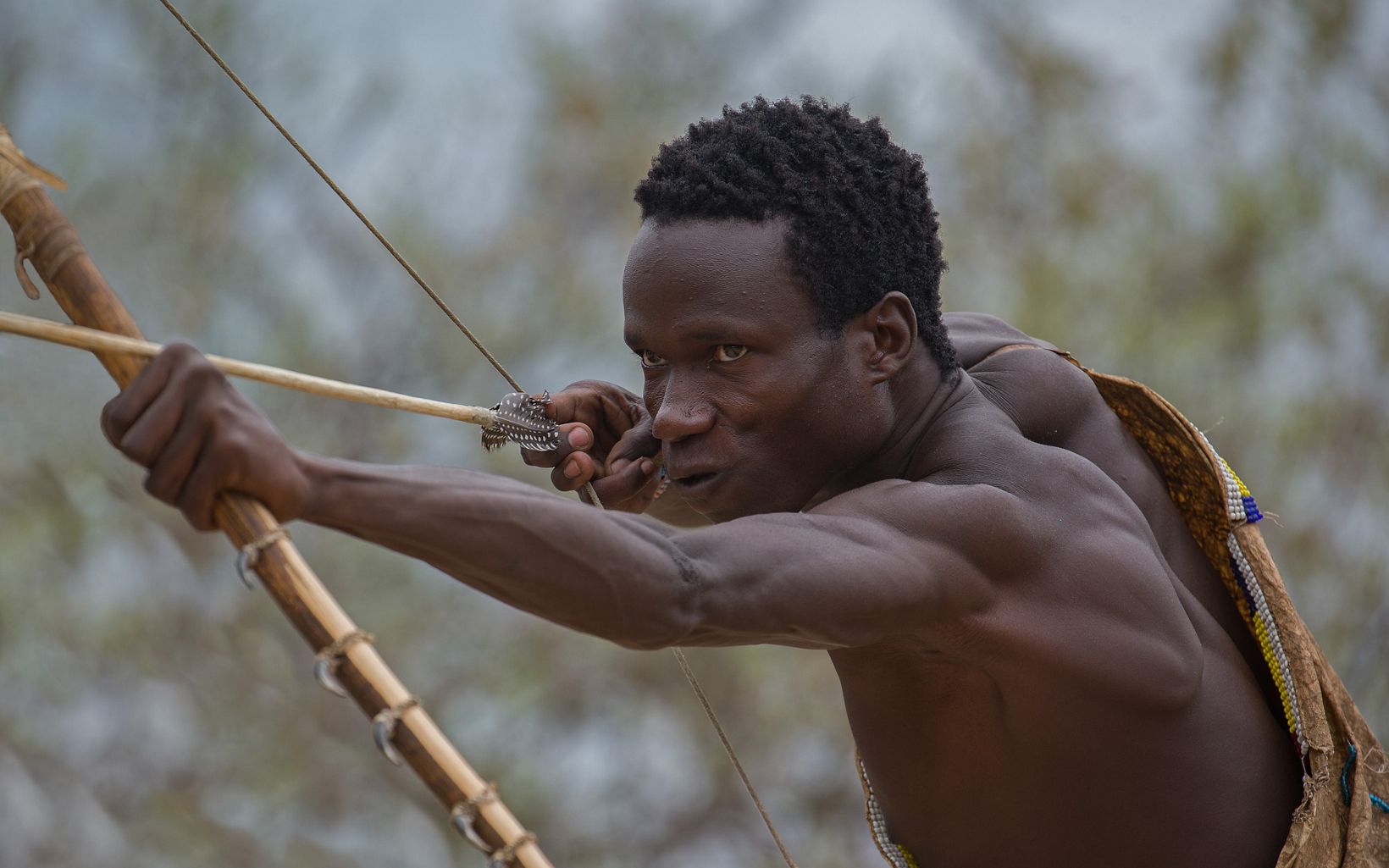Tourist Attractions at Ngorongoro Conservation Area : A highlight of most safaris in northern Tanzania is the Ngorongoro Crater. Apart from Africa’s most famous park, the Serengeti National Park, the Ngorongoro Crater is unrivaled safari park in East Africa. The crater (along with two others), the Serengeti plains, the Olduvai Gorge, and highland forest ecosystems are all part of the larger Ngorongoro Conservation Area. Because Ngorongoro is a conservation area rather than a national park, resident Maasai still graze livestock on the grasslands surrounding the crater, herds of cattle roaming amid herds of zebra. It is one of the few places in Africa where you can arrange a safari vacation and receive/enjoy more than you bargained for.

The Ngorongoro crater is the primary attraction in the Ngorongoro Conservation Area, and it is without a doubt the one that draws millions of visitors each year. This 25-kilometer-wide volcanic bowl is home to some of Tanzania’s best Big Five sightings. You may view Africa’s largest concentration of lions and one of the finest opportunities to observe endangered black rhino here, among herds of zebra and wildebeest, gigantic bull elephants, and elusive leopards. The Ngorongoro conservational area safari is always the ultimate and untouchable because the area has everything you need for your safari holiday, from tourist attractions to activities to tourist accommodations. There’s no doubt that your safari tour to Africa isn’t complete without spending three or more days at Ngorongoro. The following are the tourist attractions/what to see on your safari holiday to Ngorongoro conservation area, Tanzania.
Lake Magadi
On a nature holiday in Tanzania, there are so many great sites to visit. Lake Magadi, a shallow, azure blue lake surrounded by hundreds of long-legged pink flamingos, is located within the Ngorongoro Crater itself. The majority are smaller flamingos with dark red bills that eat blue-green spirulina algae. Many bigger flamingos, however, have black-tipped pink beaks that are slightly curved to help them sift crustaceans from the rich bottom muck. It is a lovely site that you should not miss seeing on your Ngorongoro Tanzania safari, especially if you are a bird enthusiast.
During the dry season, the lake decreases dramatically, leaving thick, crystalline salt pans that jackals, hyenas, and other animals utilize as licks to augment their nutrition. Many other regions outside the Ngorongoro Crater but still inside the Ngorongoro Conservation Area are definitely worth visiting on your Tanzania Focus East Africa Tour Expedition.
Ngorongoro crater
The Ngorongoro Crater, the world’s biggest dormant, undamaged, and unfilled volcanic crater, is the principal feature and tourist attraction of the Ngorongoro Conservation Area. The crater is 610 meters (2,000 feet) deep and encompasses 260 square kilometers. It was formed when a massive volcano burst and collapsed on itself two to three million years ago. The original volcano’s height was estimated to be between 4,500 and 5,800 meters (14,800 and 19,000 ft). Above sea level, the crater bottom is 1,800 meters (5,900 ft). In February 2013, the crater was named one of Africa’s Seven Natural Wonders.

Volcanic eruptions, such as the one that formed the Ngorongoro Crater are common In Tanzania since Similar collapses occurred at Olmoti and Empakai, but their scale and impact were far smaller. Both of the Ngorongoro craters are well-known and amazing natural wonders that you should not miss seeing if you want to make your safari experience/ tour memorable and pleasurable.
Lerai Fever Tree Forest
Elephants, rhinos, eland, bushbuck, hyrax, and hundreds of birds frequent the Lerai Fever Tree Forest, which is made up of tall, narrow yellow-barked acacias that make an airy, lace-canopied fantasy of glades. The uncommon black rhinoceros prefers this vegetation, but the old forest is rebuilding slowly due to elephant damage, which involves tearing off whole branches rather than simply grazing. During the dry season, however, saplings are spreading through the Gorigor Swamps, which are home to hippopotamus and wading birds and a favorite drinking spot for hundreds of ungulates. It’s yet another interesting tourist destination to see on your safari in the Ngorongoro conservation region.
Olduvai Gorge and Laetoli
In the Rift Valley, Lake Ndutu and Lake Masek are also on the migratory path, not far from Olduvai Gorge, where humanity’s forefathers began the trek towards civilization with the production of the first tools and the construction of the first human dwellings. Hominid footprints of our genetic forebears and relatives have been discovered in 3.7 million-year-old sedimentary rock at Laetoli.
A guided tour of the excavations and a small paleoanthropological museum in Olduvai, where you can also observe evolutionary fossils, is a must-do on any Tanzania safari.
Shifting Sands
If you believe that hearing that sand can shift or move from one place to another is magical but you also believe that it is impossible for a larger group of sand to move from one place to another, we recommend that you take your time and book a safari in the Ngorongoro conservation area to witness this kind of impossible that is now possible, Tourist Attractions at Ngorongoro Conservation Area.
The Sands of Time This amazing black dune, made mostly of volcanic ash from Oldonyo Lengai, is slowly moving westward across the plains at a rate of roughly 17 meters per year. It can be found nine meters high and 100 meters long in its curve to the north of Olduvai Gorge. It is yet another fascinating tourist destination/attraction to visit during your safari tour or vacation in Tanzania.
Olmoti Crater and Empakai Crater.
Focus East Africa Tours‘ Ngorongoro safari offers countless exciting opportunities. Two more adjacent craters are accessible via gentle, guided treks. Olmoti Crater is a calm and attractive shallow grassy hollow where Maasai cattle graze alongside eland, bushbuck, reedbuck, and the rare buffalo. The Munge stream makes a beautiful cascade on the caldera’s south wall, dropping several hundred meters into the Ngorongoro crater to feed Lake Magadi.

They are another crater in the Ngorongoro conservation area worth visiting on your Tanzania safari, especially if you wish to avoid the crowds of safari vehicles in the main Ngorongoro crater. You can stare across an amazing panorama of volcanic craters and depressions towards Ol Doinyo Lengai, the Great African Rift Valley, and even see snow on Kilimanjaro’s distant Uhuru peak in clear weather.
Gol Mountains
The Gol Mountains, located in Northern Tanzania’s Serengeti’s Southeast Sector, are an excellent place to see wildlife. The Maasai live in the Gol Mountains, where they still live in a cashless culture untainted by modernization. It’s the best tourist attraction in Ngorongoro for wildlife and cultural safaris, and it’ll make your tour vacation unforgettable.
Nasera Rock
Nasera Rock, which rises 80 meters from the Gol Mountains’ foothills, is home to mountaineering klipspringers, baboons, and a diverse range of birds. It’s also where the Leakey’s discovered a Stone Age human shelter, Tourist Attractions at Ngorongoro Conservation Area.
Oldeani Mountain
The bamboo-clad Oldeani Mountain to the southwest of the Ngorongoro crater feeds the stream that nourishes the Lerai Forest, while the seasonal Lake Eyasi is a treasure trove for archaeological and cultural excursions in East Africa.
Hadzabe Tribe
The Hadzabe Bushmen of East Africa, who live totally off the land and communicate with clicks and whistles, still live near Lake Eyasi, close to Ngorongoro. The Mbulu and Datoga pastoral and farming tribes, which were expelled from regions currently occupied by the Maasai years ago, have now settled there. It is another lovely spot to go on a cultural safari and learn more about local culture, such as native dishes and dances, during your visit to these local people near the Ngorongoro conservation area. It is one of the sights to view and enjoy to make your safari exceptional and unforgettable.

Ol Doinyo Lengai, Lake Natron
From the brink of the Great African Rift Valley escarpment, Ol Doinyo Lengai spreads its conical shadow across the lowlands near the Kenyan border. It is still active and last erupted in 2007. It is known to the Maasai as “The Mountain of God.” It is another tourist attraction on the Ngorongoro where you can go for hiking and test your body strength while preparing for your hiking safari at the fifth largest mountain in Africa-Mount meru and the largest mountain in Africa- Mount Kilimanjaro.
Ngorongoro, together with the Serengeti, Kilimanjaro, Lake Manyara, Tarangire, and Zanzibar, are all popular safari destinations in Africa that can be visited and included in your safari itinerary to complete your exploration of Tanzania. Combining all of these safari parks in Tanzania is simple and the ideal way to make your safari in Tanzania truly unforgettable, since you will visit at least 70% of the country’s attractions. By providing additional information, booking, and arranging your safari in an easy and pleasurable manner, Focus East Africa Tour is ready to make the impossible possible for your safari experience to seem distinct and spectacular.


